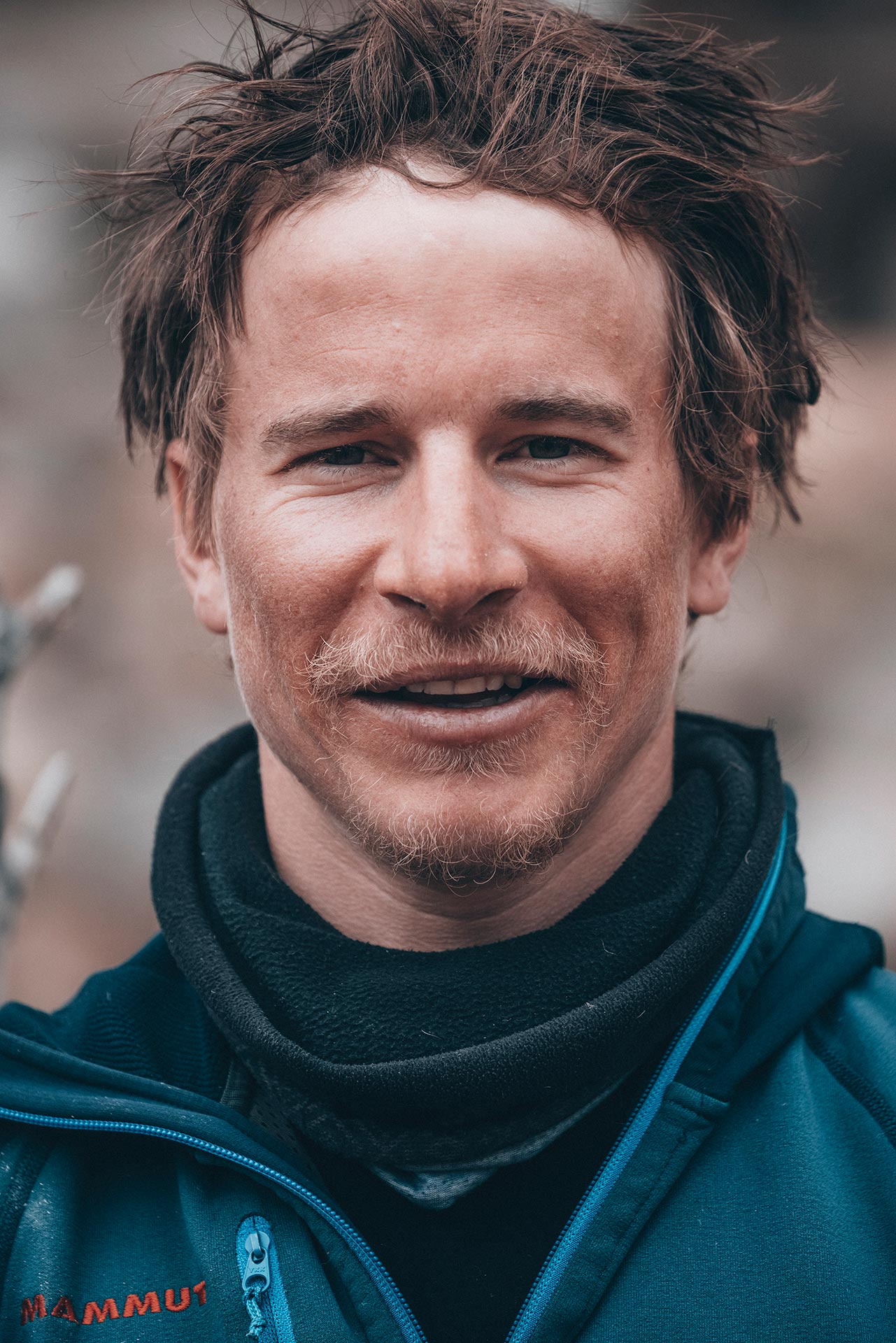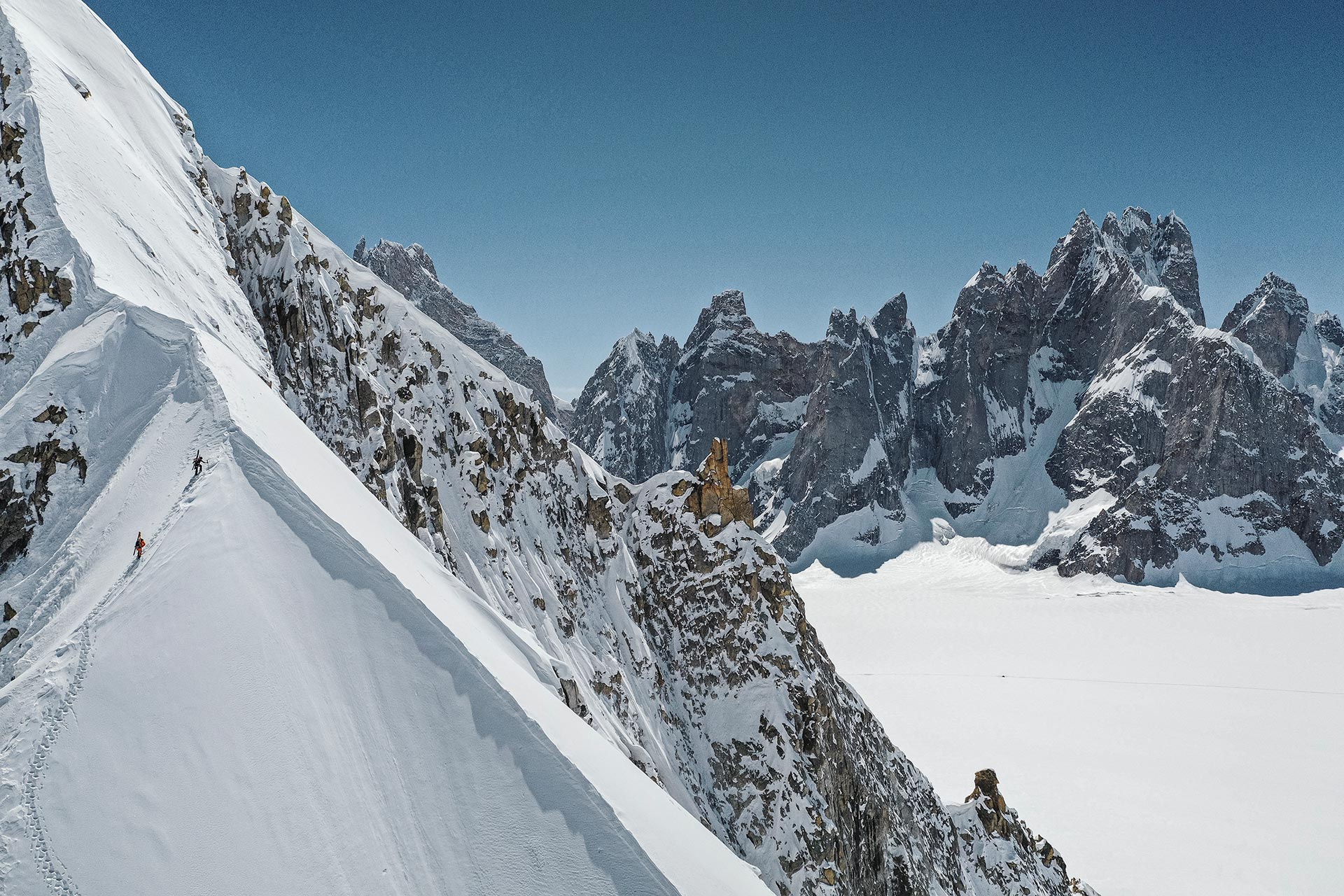
Stories
HighlightMan with a plan
On the Record: Jérémie Heitz
Jérémie Heitz's 2016 project La Liste changed the sport of freeriding. But the ambitious Swiss rider wasn't finished yet. He quickly set his sights on a new project: bringing his fast, fluid ski style to even bigger peaks. Over the past two years, Jérémie's quest brought him and ski partner Sam Anthamatten to Pakistan and Peru in pursuit of epic descents on 6000m peaks. Now that the sequel, La Liste: Everything or Nothing is out, we caught up with Jérémie to discuss the challenges and rewards of his latest project, and what's next for him.

La Liste: Everything or Nothing | Official Trailer 4K (YouTube)

Jérémie Heitz. Photo: Jeremy Bernard/Red Bull Content Pool
What was the goal of La Liste, and when did the idea of La Liste: Everything or Nothing come up?
Living in the heart of the Alps, where a big part of the history of steep skiing has been written, I chose to re-ski some of the most famous 4000m peaks to find out what the pioneers did back in the day [and] show the evolution of these steep slopes. During the original La Liste movie, I started to think about what might come next. I always start thinking about up-coming projects when I am still involved in the current one. I like to push myself.
What is the difference between your first La Liste film and the new one?
People who saw the first film told me, "What you do is stunning. But if you're not a climber yourself, it's hard to comprehend exactly what you're doing and what it must feel like up there." In the first film, I was often alone on the summit, but this time the film crew accompanied us all the way to the high camp and even the ridge.

Gotta get up to get down: Heitz and Anthamatten in Pakistan. Photo: Jeremy Bernard/Red Bull Content Pool
How do you choose the faces you want to ski?
We choose the most beautiful faces where we can show breathtaking descents. We're not about first ascents. We want to ski the face in our style. The face has to inspire us because we often travel for days to get to base camp. Once there, the weather conditions and the snow need to be perfect.
How do you plan your lines?
It's easy, actually. Easier than in competition. Because in a competition you can't climb the mountain before riding it. So usually, during this project, you're climbing the line you are going to ski down. This is super important. Faces are icy during the winter and summer. In the Himalayas, during spring and autumn, you sometimes encounter a condition where the snow sticks to the ice, followed by a small layer of snow. Then you wait for this layer to be in the ideal condition. This is quite tough in terms of timing. So, it's crucial to climb up the same line you're going to ski. Otherwise, there can be surprises. This could be your last ride.

No place for making mistakes. Photo: Jeremy Bernard/Red Bull Content Pool
How do you prepare for the face?
The preparations begin long before I stand at the summit. I prepare physically and mentally all year long for this kind of skiing. We thoughtfully and carefully choose our destinations. Even in advance, I ask myself all the questions that might pop up to clear my head when I get up there. On the day itself, I climb the wall I want to ski later, so that I know where to avoid ice or rocks. If there is the slightest doubt at that moment, I won't go and will come back another day – or not at all. I don't ignore the doubts, but I listen to my intuition. If I hesitate, I stop the attempt. When I stand at the top of the ridge, I am nervous, of course, but confident.
How did you prepare physically, mentally, and on the day itself?
I trained physically in the summer and autumn – fitness, cardio, balance. I don't have any special mental training. I think the most important thing is my experience and knowledge, what I've learned in the mountains! For the day itself, I need to be in excellent physical shape, that's obvious. For the mental aspect, it's a long process. It's hard to explain: It begins with preparing the materials the day before, carefully studying and checking the objective and weather forecast. Climbing the mountain face you're going to ski is part of the preparation too. You can have a close look at the conditions and the steepness, then when you're at the top, ready to ski, you've already got many of the answers to a lot of questions – that's a big deal! With this routine and organization, I get myself more focused for the way down.

Jérémie´s mission: To bring fast, fluid skiing to the world´s biggest descents. Photo: Jeremy Bernard/Red Bull Content Pool
Which experience touched you the most?
The reception in Pakistan. Because of the constant media reports about terrorist attacks, we were worried and had certain preconceptions when we arrived. However, we only met dear, friendly, and cheerful people in the city as well as the remote mountain villages. We arrived in Lahore during Ramadan, and people invited us to enter the mosque, which is usually absolutely forbidden. Thousands of people were praying together when suddenly a military siren sounded, and they served the Ramadan meal. The imam invited us to eat. That's one of my most memorable recollections since I've been traveling the world.
What was your most significant moment of fear?
That's a good question. I think it depends on the conditions. If the conditions aren't good and I’m already scared while ascending, I think it's not a good basis for skiing down. Even though I feel better on skis than crampons. I remember the first fear I had on this project, and this was only when we were travelling to Pakistan. When we arrived it was just wonderful. The people were the kindest people I've ever met. After that we discovered Pakistan, and it's gorgeous. The mountains are sharp, and as soon as you stand on those lines, it's pretty impressive. I remember talking a lot with Sam. It's a huge chance to have him by my side because we know each other so well, which helps with any feelings of uncertainty. But yes, when you're standing on the top and tell the others over the walkie-talkie that you’re ready – that puts a little more pressure on you. You want to ski the best lines, even better than you imagined in your head. I would say just standing on the top, five seconds before you drop in, is probably the scariest moment.

After careful preparation, Jérémie paints his canvas. Photo: Jeremy Bernard/Red Bull Content Pool
How does your team prepare for a possible accident?
Firstly, we are already as careful as possible when assessing the risk. While I bring the technical skiing experience, Sam, my climbing, and skiing partner, is a certified mountain guide. We couldn't do these projects without the deep trust that we have in each other. Secondly, we have a team of local Sherpas and European mountain guides who complement each other's knowledge. We also attended first aid courses with the Valais rescue teams to know what first aid measures to take in mountain accidents. We always have a first aid kit, a satellite phone, and medical teams available 24 hours daily. One of our mountain guides has a profound medical rescue education. We are also prepared for the fastest possible rescue. We pay for helicopters to always be on standby on those crucial days to respond immediately should a rescue mission be necessary.
How can you reduce the risk when being at such a high altitude? Is it only hard training that helps, or how else can you handle the risk factor?
When we put the skis on, we need to put ourselves in a mindset that nothing can happen to us. Because if something happens, there's no helicopter within one hour. The rescue—if you survive the fall—is going to be super hard or even impossible. You need to consider that. You need to know the crew you're working with; you need to be confident even with the cameraman, and we brought a mountain guide with us. He checked the conditions with us, and we discussed everything together. It's not only about two athletes on the mountain—it's a team effort, and we're communicating together. If there's one red light or something like this, we go back to the camp and climb the big mountain the next time. We are fine returning home without skiing.

Heitz and Anthamatten on location in Pakistan for the filming of La Liste: Everything or Nothing. Photo: Luca Rolli
You skied 6000m peaks in Pakistan and Peru. Do you think you can apply this skiing style to even higher peaks? Like 8000m peaks?
People already skied on 8000m peaks but not with the same idea, style or equipment. Personally, I'm not sure if I would do this with my ski boots and skis like we did in Pakistan and Peru. The altitude was already hard enough, and I asked myself during the expedition, "What could be the next project or the next expedition?" I'm always thinking about the future. We might change something about our equipment and approach higher peaks. I will never say never, but for now, I'm happy with that, I will share this with the people, and we will think about the future later.

Skiing where Jérémie does—and living to tell the tale—requires masterful risk management. Photo: Jeremy Bernard/Red Bull Content Pool
In the film, we see you experiencing a scary accident. Were you thinking about canceling the whole project after the accident?
Yes, this was my initial reaction. As this happened on the first expedition, I thought the whole project might be too much for me. I had a lot of discussions with my family, the people around me, and Sam, for whom the situation was really hard as well. We were letting some time pass and were doing some summertime activities. When the winter arrived, we slowly got back to the Alps and naturally returned to skis again. After that, we decided to continue all together.
Did you ski differently after this accident?
Yes. After this accident, my skiing changed a lot. I had a moment in the first movie when I lost my ski, which affected me. But when I ski a bit faster, there's always the question about my gear: "Will I lose a ski? What will happen if I fall?" Those are thoughts I never had when I was younger. I guess it's a life process.





